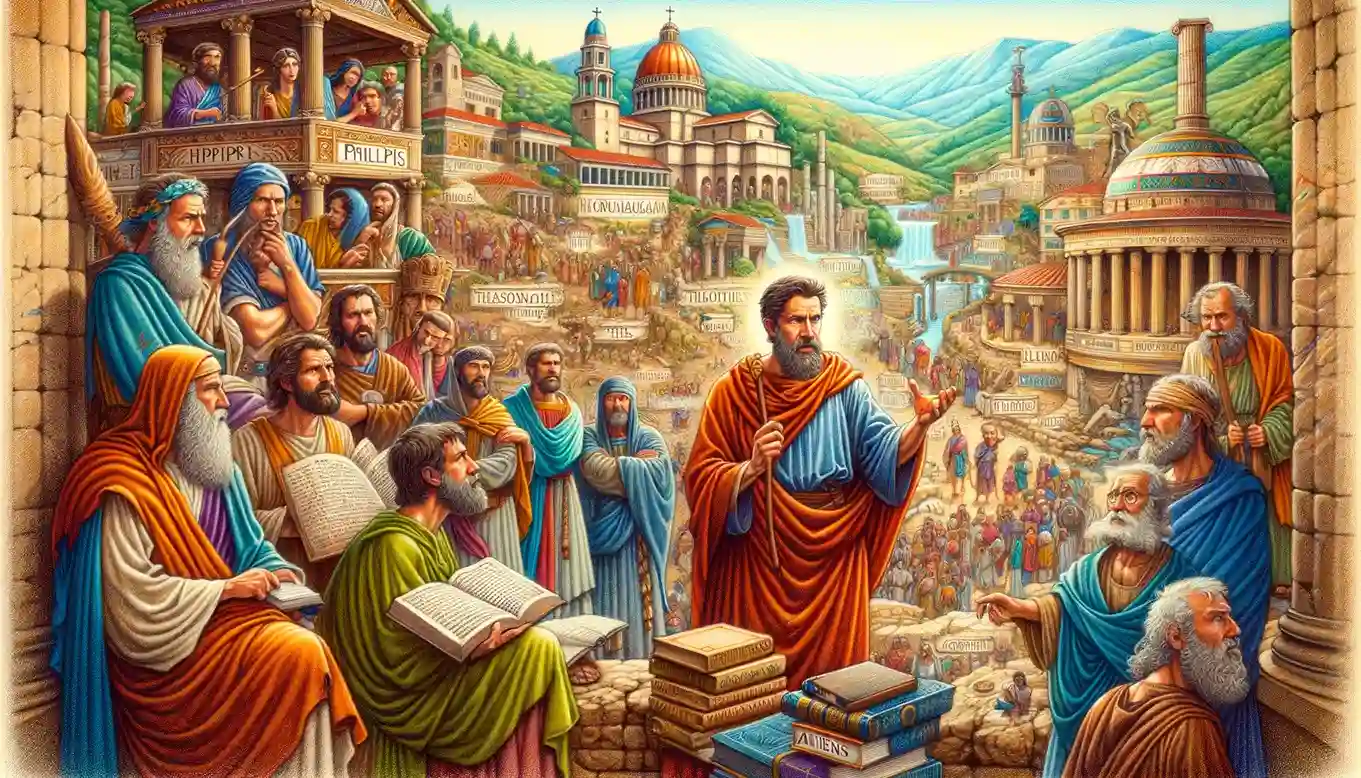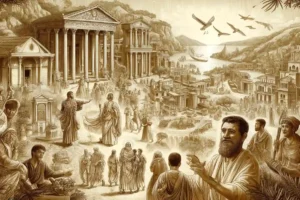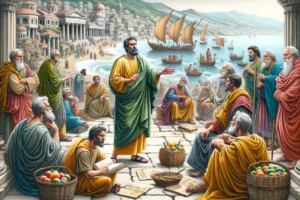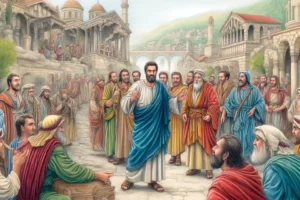
Paul’s Second Missionary Journey: Expanding the Reach of the Gospel
Paul’s second missionary journey was a significant phase in the expansion of early Christianity, marked by extensive travel, strategic evangelism, and the establishment of strong Christian communities.
- Companions: Silas, Timothy, and later Luke.
- Starting Point: Antioch in Syria.
- Key Locations: Philippi, Thessalonica, Berea, Athens, Corinth, Ephesus.
- Opposition: Faced imprisonment, riots, and philosophical debates.
- Miracles: Included the exorcism of a slave girl and the conversion of Lydia.
- Message: Emphasized salvation through faith in Jesus Christ to both Jews and Gentiles.
- Scriptural Reference: Acts 15:36-18:22.
Paul’s second missionary journey, detailed in Acts 15:36-18:22, played a crucial role in the spread of Christianity into Europe and the establishment of key churches. Accompanied initially by Silas and later joined by Timothy and Luke, Paul embarked on this journey to revisit the churches he had established and to expand the Gospel’s reach.
Departure from Antioch
The journey began in Antioch, where Paul proposed to revisit the believers in all the towns where they had preached the word of the Lord (Acts 15:36). A sharp disagreement with Barnabas over John Mark led to their separation, with Barnabas taking Mark to Cyprus and Paul choosing Silas as his companion (Acts 15:37-40).
Strengthening Existing Churches
Paul and Silas traveled through Syria and Cilicia, strengthening the churches. In Lystra, they met Timothy, a young disciple well spoken of by the believers. Paul circumcised Timothy to respect Jewish customs and took him along on the journey (Acts 16:1-3). This act demonstrated Paul’s strategic approach to ministry, balancing cultural sensitivity with doctrinal integrity.
Divine Guidance to Macedonia
While traveling through Phrygia and Galatia, Paul received a vision of a man from Macedonia pleading for help, which led them to conclude that God was calling them to preach the Gospel there (Acts 16:9-10). This divine guidance was pivotal, marking the first major step in bringing Christianity to Europe.
Key Locations and Events
- Philippi:
- Conversion of Lydia: Paul and his companions met Lydia, a seller of purple goods, whose heart the Lord opened to respond to Paul’s message. She and her household were baptized (Acts 16:14-15).
- Imprisonment and Miracle: Paul exorcised a spirit from a slave girl, resulting in their imprisonment. An earthquake opened the prison doors, leading to the conversion of the jailer and his household (Acts 16:16-34).
- Thessalonica:
- Berea:
- The Bereans were more noble-minded, receiving the message with eagerness and examining the Scriptures daily. Many believed, but opposition from Thessalonian Jews caused Paul to leave (Acts 17:10-15).
- Athens:
- In Athens, Paul engaged with Epicurean and Stoic philosophers at the Areopagus, delivering a sermon about the “unknown god” and proclaiming Jesus’ resurrection. Some mocked, but a few believed, including Dionysius the Areopagite and a woman named Damaris (Acts 17:16-34).
- Corinth:
- Paul stayed in Corinth for a year and a half, working as a tentmaker with Aquila and Priscilla and preaching in the synagogue. Despite opposition, many Corinthians believed and were baptized, including Crispus, the synagogue leader (Acts 18:1-11).
- Ephesus:
- Briefly visited Ephesus and reasoned with the Jews in the synagogue. Promised to return, leaving Priscilla and Aquila there to continue the work (Acts 18:19-21).
Theological Insights
Several key theological themes emerge from Paul’s second missionary journey:
- Divine Guidance: The vision of the Macedonian man underscores the role of divine guidance in missionary work, directing Paul to significant opportunities for the Gospel’s expansion.
- Inclusivity of the Gospel: The journey highlighted the Gospel’s reach to diverse populations, including Jews, God-fearing Greeks, women, philosophers, and Roman officials.
- Perseverance in Ministry: Paul’s perseverance amidst opposition and his strategic approach to ministry, adapting to different cultural contexts, demonstrate the resilience required in evangelism.
Conclusion
Paul’s second missionary journey significantly expanded the reach of Christianity, establishing vital churches in Europe and strengthening existing ones. His encounters, from the conversion of Lydia in Philippi to the philosophical debates in Athens, highlight the dynamic and transformative power of the Gospel. Paul’s strategic approach, guided by divine vision and resilience in the face of opposition, laid a robust foundation for the early Christian church’s growth and influence.



